Motion detectors are an essential component of modern security systems, helping to enhance safety and conserve energy. These devices are designed to detect movement within a designated area and trigger a response, such as turning on a light or activating an alarm.
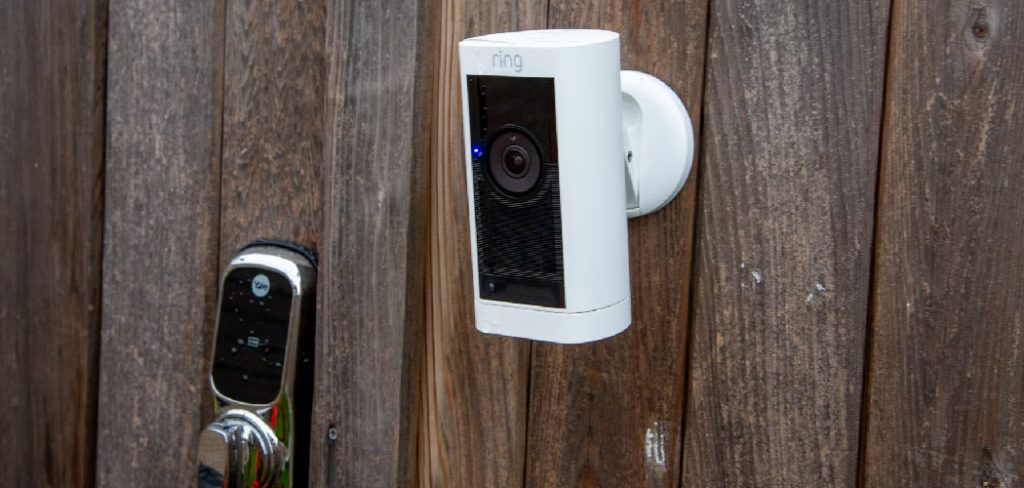
Installing motion detectors is a straightforward process that can provide peace of mind and improve the functionality of your home or business. This guide will walk you through how to install motion detectors effectively and ensure optimal performance.
Importance of Proper Installation
Proper installation of motion detectors is crucial to their effectiveness and reliability. When installed correctly, motion detectors can accurately detect movement and reduce the likelihood of false alarms, which can otherwise become disruptive or lead to complacency.
Proper placement ensures they cover the intended areas without blind spots and function optimally, even in challenging environments. Additionally, correct installation helps to avoid issues such as interference with pets or objects that could trigger unnecessary responses.
Taking the time to install motion detectors properly not only maximizes their performance but also extends their lifespan, ensuring you get the most value from your investment in security and convenience.
Types of Motion Detectors
Motion detectors come in various types, each designed to suit specific needs and environments. Understanding the differences can help you select the best option for your security or energy management setup.
- Passive Infrared (PIR) Sensors
PIR sensors detect body heat by sensing infrared radiation emitted by objects. These are the most common type of motion detectors and are highly effective in indoor environments. They are energy-efficient, reliable, and ideal for detecting human presence with minimal false alarms.
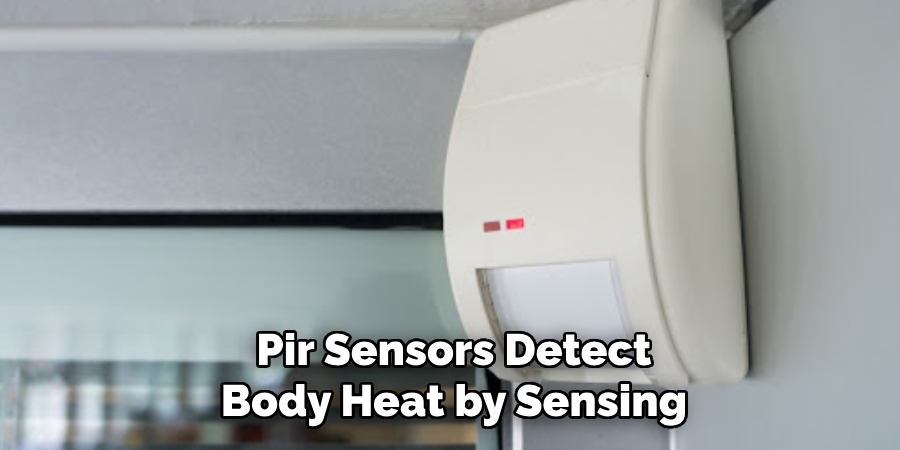
- Ultrasonic Sensors
Ultrasonic sensors use high-frequency sound waves to detect motion. When these sound waves bounce off objects and return to the sensor, any change in the wave’s frequency caused by movement is registered. These sensors are excellent for covering large areas but may be prone to false alarms caused by environmental noise or vibration.
- Microwave Sensors
These sensors emit microwave signals and detect motion based on the reflection of these signals. Microwave sensors can cover larger areas than PIR sensors and are effective for both indoor and outdoor use. However, their sensitivity means they may detect movement through walls, resulting in occasional false alarms.
- Dual Technology Sensors
Dual technology detectors combine two types of sensors, such as PIR and microwave, to reduce false alarms while maintaining accuracy. Both systems must detect motion simultaneously to trigger a response, making them highly reliable for various applications.
- Tomographic Motion Detectors
These sensors use radio wave networks to detect movement in large open spaces, making them suitable for warehouses or expansive areas where traditional sensors might struggle. They are highly effective and resistant to interference from small objects or environmental factors.
Choosing the right type of motion detector depends on factors such as the coverage area, sensitivity requirements, environmental conditions, and susceptibility to false alarms. Understanding these options helps ensure the best fit for your needs.
10 Methods How to Install Motion Detectors
1. Choose the Right Location
The effectiveness of motion detectors largely depends on their placement. Select locations where intrusions are most likely, such as entryways, hallways, or large open spaces. Avoid placing them near heat sources, vents, or areas with direct sunlight, as these can trigger false alarms.
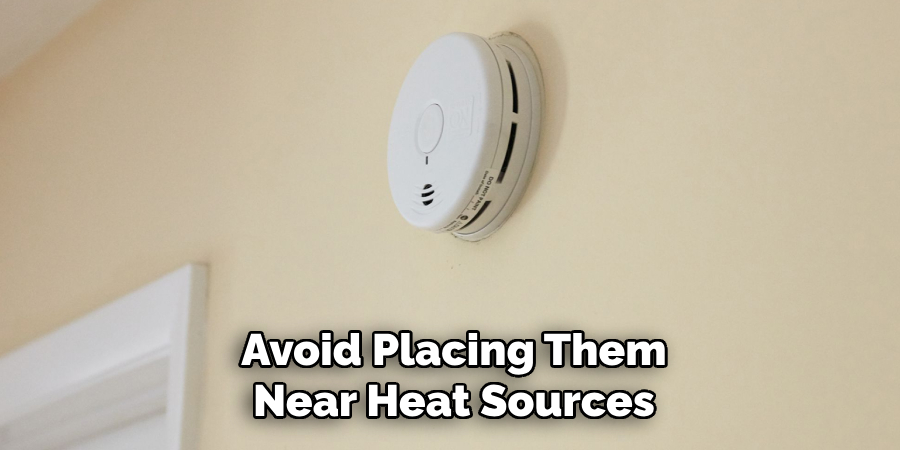
Consider the sensor’s range and angle while positioning it to ensure optimal coverage. If installing outdoors, ensure the detector is sheltered from rain and extreme weather conditions.
2. Test Coverage Area Before Installation
Before permanently mounting the detector, test its coverage area. Hold the detector in your desired location and walk through the space to see if it detects your movements.
Most motion detectors have a test mode that helps you check their detection zone. Adjust the angle and position as needed to eliminate blind spots and ensure maximum coverage without interference.
3. Secure Mounting Surface
A stable and secure mounting surface is critical for the proper functioning of motion detectors. Clean the surface to remove dust and debris before mounting. For walls, ensure the material can hold screws or adhesive securely.
If mounting on uneven surfaces, use brackets or mounts designed for the detector to keep it level and stable. Properly securing the device prevents false alarms caused by vibrations or movement.
4. Follow Manufacturer’s Guidelines
Each motion detector comes with specific installation instructions. Carefully read the manufacturer’s manual to understand the device’s features, recommended placement, and installation process.
Some detectors may require specific tools or components, such as mounting brackets or screws, which are often included in the package. Adhering to these guidelines ensures the detector functions as intended and avoids voiding the warranty.
5. Connect to the Power Source
Motion detectors can be powered by batteries, hardwiring, or plugging into a standard outlet. If your detector is battery-operated, insert fresh batteries and test the device to ensure it powers on.
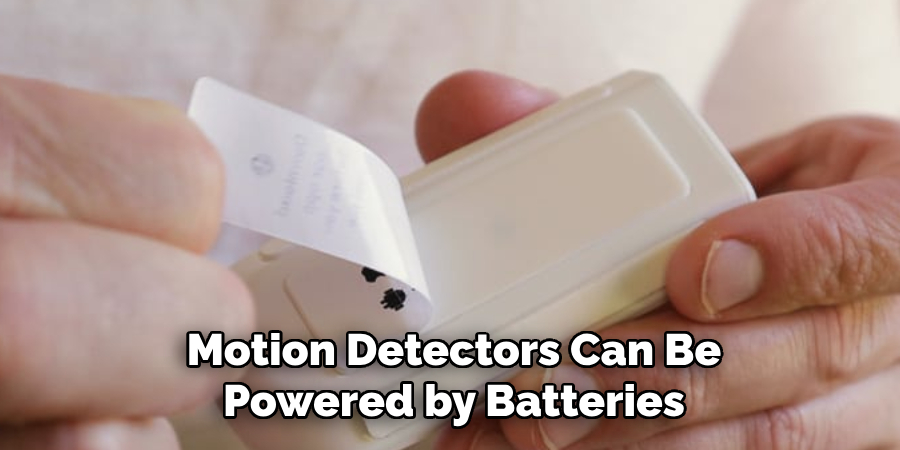
For hardwired detectors, follow the manufacturer’s wiring diagram and connect the wires to the appropriate terminals. Ensure the power is turned off at the breaker before handling electrical connections. Plug-in detectors should be installed near a power outlet for easy access.
6. Integrate with Security Systems
For enhanced functionality, integrate your motion detectors with an existing security system. Follow the instructions to pair the detector with the control panel or smart home hub. This often involves entering pairing mode on both devices and confirming the connection.
Ensure the detector’s settings are synchronized with the security system for seamless operation, such as triggering alarms or sending notifications when motion is detected.
7. Adjust Sensitivity Settings
Most motion detectors allow you to adjust their sensitivity to reduce false alarms. Set the sensitivity level based on the environment. For example, in areas with pets, choose a lower sensitivity or enable pet-immune settings to prevent the detector from reacting to small animals.
Test the detector after adjusting the sensitivity to ensure it detects legitimate movements while ignoring insignificant ones.
8. Conduct a Walk-Test
A walk-test involves simulating movement within the detector’s coverage area to confirm its functionality. Activate the detector’s test mode and walk at various speeds and directions within its range.
Observe how it responds to your movements and make adjustments to its angle or position as needed. Regular walk-tests are recommended after installation to ensure the detector continues to function optimally.
9. Use Appropriate Mounting Hardware
The type of mounting hardware used can significantly impact the stability and performance of the motion detector. Use screws and wall anchors for heavier detectors or adhesive strips for lightweight models.
Ensure the hardware is compatible with the surface material, such as drywall, wood, or concrete. For outdoor installations, use weather-resistant hardware to prevent corrosion and ensure long-term durability.
10. Perform Regular Maintenance
After installation, regular maintenance ensures the motion detector remains effective. Clean the sensor lens with a soft, dry cloth to remove dust and debris that can obstruct its view.
Check the battery status for battery-operated detectors and replace them as needed. Inspect the mounting hardware periodically to ensure the detector remains securely attached. Update the device firmware if connected to a smart system, as manufacturers often release updates to improve performance.
Things to Consider When Using Motion Detectors
- Environmental Factors
The effectiveness of motion detectors can be influenced by environmental conditions. Identify areas with fluctuating temperatures, high humidity, or strong winds, which can lead to false alarms. Additionally, verify if the detector is suitable for indoor or outdoor use based on its design and specifications.
- Pet Interference
If pets are present in the space, choose motion detectors with pet-immune features to avoid unnecessary alerts. These detectors are designed to ignore movements caused by animals up to a certain weight, ensuring only relevant activity is detected.
- Lighting Conditions
Some motion detectors may struggle in areas with bright lights or rapid light changes. Ensure the installation location minimizes exposure to direct sunlight, reflections, or artificial lighting that could compromise the detector’s accuracy.
- Detector Range and Coverage
Be mindful of the detector’s range and field of view to match the specific coverage requirements of your space. Overlapping coverage areas can help avoid blind spots but ensure detectors are not positioned too close together to prevent interference.
- Power Source Reliability
Choose a power source that aligns with your needs. For battery-operated detectors, monitor battery life consistently. For wired options, ensure the power supply is stable and not prone to interruptions.
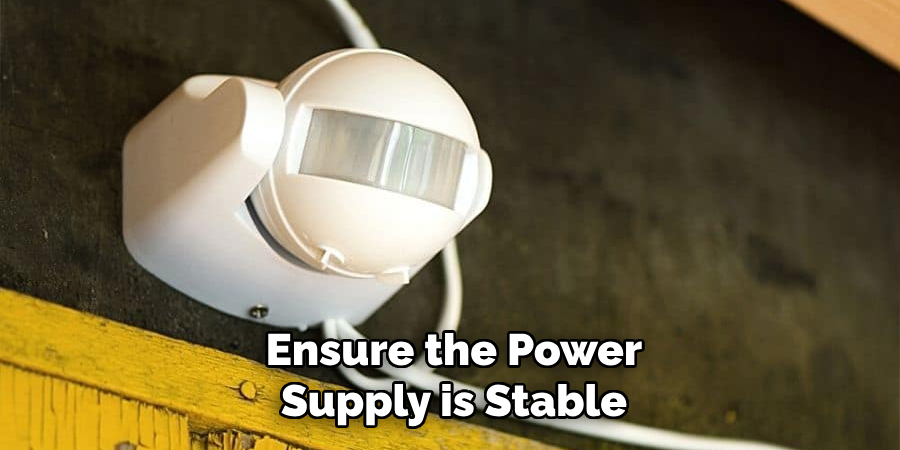
Conclusion
Motion detectors are a critical component of any security system, offering a reliable way to monitor movement and enhance the safety of your home or business. Proper installation and maintenance ensure optimal performance, while considering environmental factors and practical features, such as pet immunity and sensitivity adjustments, can minimize disruptions and false alarms.
By integrating motion detectors with a comprehensive security system and adhering to manufacturer guidelines, you can achieve a balanced combination of safety, convenience, and peace of mind. Thanks for reading, and we hope this has given you some inspiration on how to install motion detectors!
About
Safety Fic is a distinguished figure in the world of Diy design, with a decade of expertise creating innovative and sustainable Diy solutions. His professional focus lies in merging traditional craftsmanship with modern manufacturing techniques, fostering designs that are both practical and environmentally conscious. As the author of diy, Safety Fic delves into the art and science of Safety Fic-making, inspiring artisans and industry professionals alike.
Education RMIT University
(Melbourne, Australia) Associate Degree in Design (Safety Fic) Focus on sustainable design, industry-driven projects, and practical craftsmanship. Gained hands-on experience with traditional and digital manufacturing tools, such as CAD and CNC software.
Nottingham Trent University
(United Kingdom) Bachelor’s in diyfastly.com and Product Design (Honors) Specialized in product design with a focus on blending creativity with production techniques. Participated in industry projects, working with companies like John Lewis and Vitsoe to gain real-world insights.
Publications and Impact
In diy, Safety Fic his insights on indoor design processes, materials, and strategies for efficient production. His writing bridges the gap between artisan knowledge and modern industry needs, making it a must-read for both budding designers and seasoned professionals.
